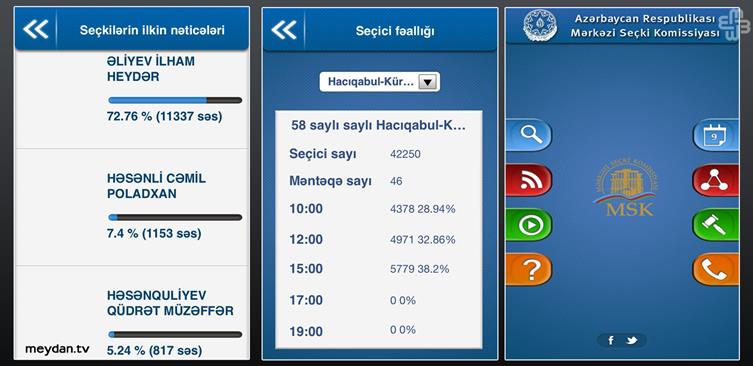T-Mobile USA just loves to crow about how different it is from the rest of its carrier rivals; it decided to show off the latest of its “Uncarrier” moves at a packed concert/press event in New York City’s Bryant Park.
Here’s the gist of it: if you’re a T-Mobile customer on one of their Simple Choice plans, you can now use unlimited data in 100+ countries totally free of charge. Better still, existing customers don’t have to do anything — the feature will kick in starting on October 31, so there’s no need for last-minute phone prep before leaving on a jet plane.
This, in short, is ridiculous. In a very good way.
It can be hard to appreciate how impressive that is unless you’re a traveler who’s had to deal with roaming headaches in the past. Let’s put this whole thing in perspective. Back before T-Mobile rolled out this plan, they charged a whopping $10/MB if you were data roaming in Canada, and $15/MB everywhere else. That means if you were to listen to, say, an average 40MB episode of the TechCrunch Droidcast while abroad, you’re looking at an additional $600 on your next phone bill. That’s an admittedly extreme example, but it’s not hard to see how those charges can add up really fast. T-Mobile has also flattened out its international call fee structure. While costs easily used to top $1.59 per minute, calling home from those compatible countries will now cost $0.20 per minute.
Other carriers handle things a little differently. AT&T for instance is a big fan of international data bundles (which I’ve had to deal with more than a few times in the past) — $30 nets you a 120MB bucket to sip from while you’re traveling, with prices increasing from there. That seems a bit easier to swallow, but T-Mobile is the first of the nation’s carriers to do away with the need for pricey bolt-on packages or exorbitant roaming fees altogether. Considering just how much these carriers love money (seriously, it costs hardly anything at all for a carrier to pass a text message along and think about how much those things cost) this is a very surprising, very welcome move.
Naturally, there are some catches. T-Mobile hasn’t confirmed what sort of data speeds you can expect if you’re listening to the Droidcast while on holiday in Cambodia, but I’d wager they’re not terribly zippy. In the event you need to add some extra oomph to the equation, you’ve got the option of shelling out additional cash to temporarily boost those data speeds.
If I’m being completely honest though, there’s probably a considerable chunk of T-Mobile customers that will never take their phones outside of the confines of the United States. This move is certainly a big one, but only a small subset of customers will really see the value in it. At this stage, T-Mobile’s game is all about proving that it’s a different sort of carrier so it can tempt precious subscribers away from its rivals. But I’d wager it’s still got a long way to go before it gets where it wants to be.
You can check out the full list of compatible countries below.
Aland Islands, Anguilla, Antigua and Barbuda, Argentina, Armenia, Aruba, Australia, Austria, Bahrain, Barbados, Belgium, Bermuda, Bolivia, Bonaire, Brazil, British Virgin Islands, Bulgaria, Cambodia, Canada, Cayman Islands, Chile, China, Christmas Island, Colombia, Costa Rica, Curacao, Cyprus, Czech Republic, Denmark, Dominica, Dominican Republic, Easter Island, Ecuador, Egypt, El Salvador, Estonia, Faeroe Islands, Finland, France, French Guiana, Germany, Ghana, Greece, Grenada, Guadeloupe, Guatemala, Guyana, Hong Kong, Hungary, Iceland, India, Indonesia, Iraq, Ireland, Israel, Italy, Jamaica, Japan, Kenya, Kuwait, Latvia, Lithuania, Luxembourg, Malaysia, Malta, Martinique, Mexico, Moldova, Montserrat, Netherlands, Netherlands Antilles, New Zealand, Nicaragua, Norway, Pakistan, Panama, Peru, Philippines, Poland, Portugal, Qatar, Romania, Russia, Saudi Arabia, Singapore, Sint Maarten, Slovakia, South Africa, South Korea, Spain, Sri Lanka, St. Barthelemy, St. Kitts and Nevis, St. Lucia, St. Martin, St. Vincent & the Grenadines, Suriname, Svalbard, Sweden, Switzerland, Taiwan, Thailand, Trinidad and Tobago, Turkey, Turkmenistan, Turks and Caicos Islands, Ukraine, United Arab Emirates, United Kingdom, Uruguay, Uzbekistan, Vatican City, Venezuela, Vietnam, Zambia
Via: techcrunch








